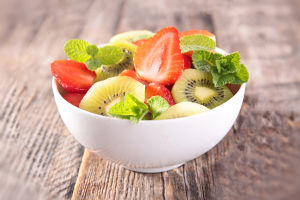Hardy kiwi, scientifically known as Actinidia arguta, is a lesser-known cousin of the more common fuzzy kiwi (Actinidia deliciosa).
While fuzzy kiwi is native to China, hardy kiwi is indigenous to the cooler regions of Eastern Asia, including Japan and Korea.
With its smaller, smoother fruit and ability to withstand colder climates, hardy kiwi has gained popularity among home gardeners and commercial growers alike. Cultivating this delicious fruit requires careful attention to planting, pruning, and pollination techniques to ensure a bountiful harvest.
Choosing the Right Location:
The first step in cultivating hardy kiwi is selecting the optimal location for planting. Hardy kiwi thrives in full sun to partial shade and prefers well-drained, fertile soil with a slightly acidic pH ranging from 5.5 to 7.0. Hardy kiwi vines require sturdy support structures, such as trellises or pergolas, to support their vigorous growth habit and heavy fruit load.
Planting Hardy Kiwi Vines:
Hardy kiwi is typically propagated from cuttings or nursery-bought plants. Planting should be done in early spring after the threat of frost has passed. Dig a hole twice the size of the root ball and amend the soil with organic matter, such as compost or well-rotted manure, to improve fertility and drainage. Space vines approximately 10 to 12 feet apart to allow for adequate airflow and sunlight penetration.
Training and Pruning:
Proper training and pruning are essential for shaping hardy kiwi vines and maximizing fruit production. Begin by selecting the strongest, healthiest shoots to serve as the main leaders of the vine. As the vine grows, gently guide the shoots along the support structure, securing them with ties or clips to promote upward growth. Pruning should be done annually during the dormant season, typically in late winter or early spring. Remove any dead, damaged, or overcrowded branches to improve airflow and reduce the risk of disease. Additionally, thin out excess fruiting wood to promote larger, healthier fruit and facilitate easier harvesting.
Pollination and Fruit Set:
Unlike fuzzy kiwi, which requires both male and female vines for pollination, hardy kiwi is dioecious, meaning individual plants are either male or female. To ensure fruit set, it's essential to plant both male and female vines in close proximity. A general rule of thumb is to plant one male vine for every eight female vines to ensure adequate pollination.
Fertilization and Irrigation:
Hardy kiwi vines are heavy feeders and benefit from regular fertilization throughout the growing season. Apply a balanced, slow-release fertilizer in early spring, followed by additional applications of nitrogen-rich fertilizer every four to six weeks during the growing season. Maintain consistent soil moisture, particularly during flowering and fruit development, to prevent drought stress and promote optimal growth.
Harvesting and Storage:
Hardy kiwi fruits typically ripen in late summer to early fall, depending on the cultivar and growing conditions. Harvest fruits when they are fully ripe but still firm to the touch, with a slight yield to gentle pressure. Avoid waiting until the fruits soften, as they may become overripe and prone to spoilage. Once harvested, hardy kiwi fruits can be stored in the refrigerator for up to several weeks or preserved by freezing or canning for long-term storage. Enjoy them fresh as a nutritious snack, or incorporate them into a variety of culinary creations, including smoothies, salads, and desserts.
Cultivating hardy kiwi requires careful attention to planting, pruning, and pollination techniques to ensure a successful harvest. With proper care and maintenance, hardy kiwi vines can thrive in a wide range of climates and produce an abundance of delicious fruits for years to come. Whether grown in home gardens or on commercial farms, hardy kiwi is a versatile and rewarding crop that delights the senses and nourishes the body.


